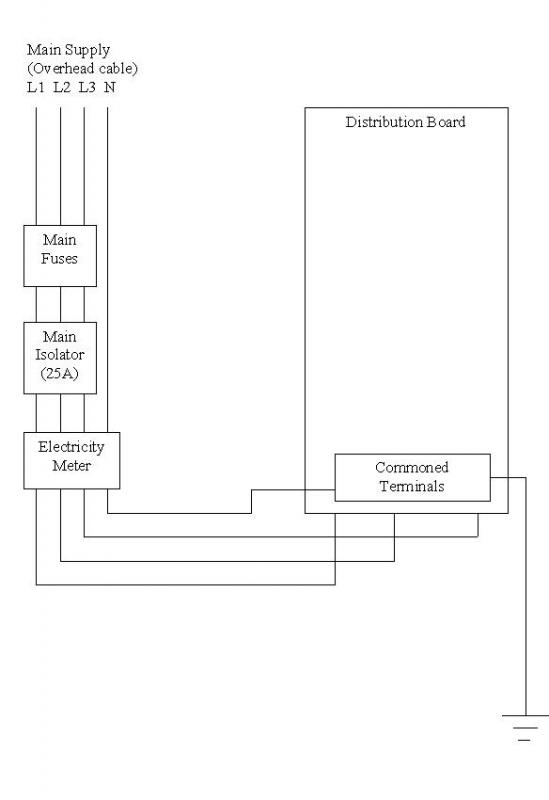Hi,
I live in the Czech Republic and I have an old consumer unit that needs updating, and on inspection, it has an unusual earthing system (possibly not unusual for the Czech Republic). Here is a basic diagram:
It's a 3-phase system with a earth wire heading towards the ground ( I am assuming that its a ground rod, but the area around it has been paved so I cant actually see the rod) so it looks a bit like a TT but the local earth is commoned with the neutral in the distribution board. Is this normal?
Is there any disadvantage (or danger) in joining the earth rod with the incoming neutral on a TT system
If the local earth was not there, then I suppose it would look like a TN-C-S system, but the separation of neutral and earth happens after the meter, in the distribution board, rather than before
In the new consumer unit that I would like to fit a 3-phase RCD. Would this earthing system cause a problem with this?
Thanks.
I live in the Czech Republic and I have an old consumer unit that needs updating, and on inspection, it has an unusual earthing system (possibly not unusual for the Czech Republic). Here is a basic diagram:
It's a 3-phase system with a earth wire heading towards the ground ( I am assuming that its a ground rod, but the area around it has been paved so I cant actually see the rod) so it looks a bit like a TT but the local earth is commoned with the neutral in the distribution board. Is this normal?
Is there any disadvantage (or danger) in joining the earth rod with the incoming neutral on a TT system
If the local earth was not there, then I suppose it would look like a TN-C-S system, but the separation of neutral and earth happens after the meter, in the distribution board, rather than before
In the new consumer unit that I would like to fit a 3-phase RCD. Would this earthing system cause a problem with this?
Thanks.


